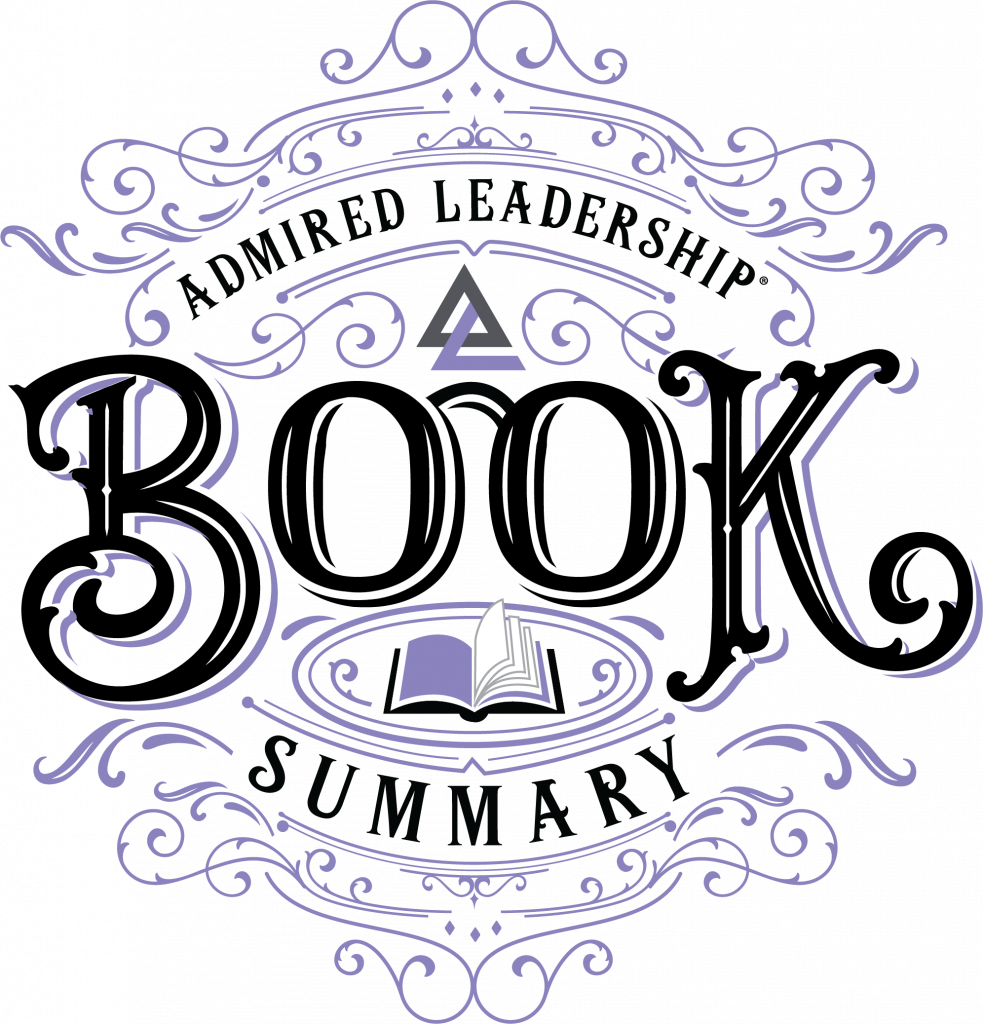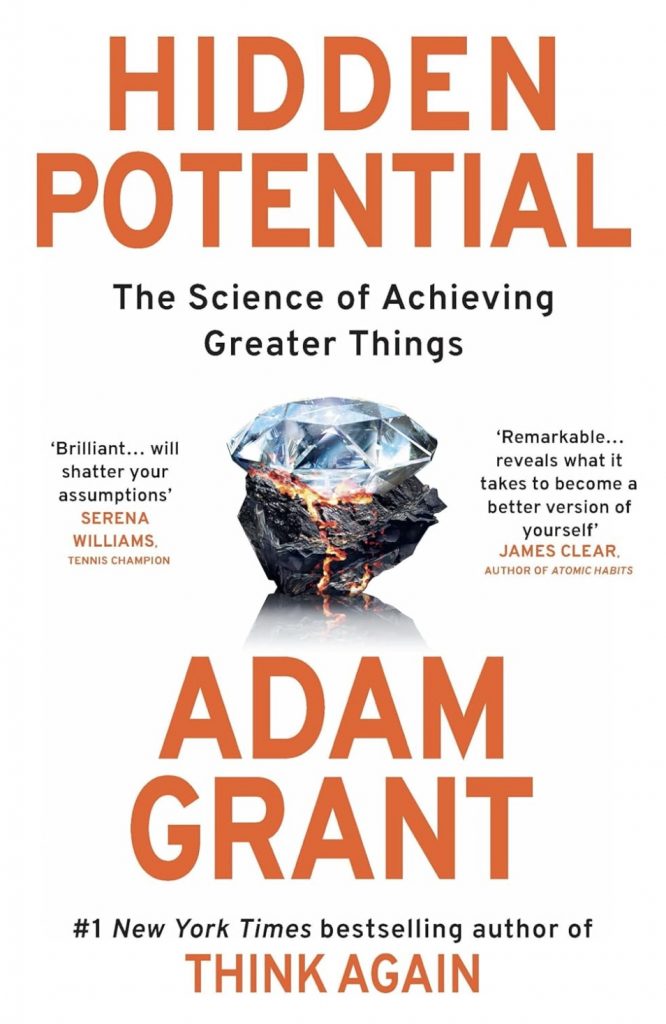Key Quote:
“Collective intelligence rises as team members recognize one another’s strengths, develop strategies for leveraging them, and motivate one another to align their efforts in pursuit of a shared purpose. Unleashing hidden potential is about more than having the best pieces — it’s about having the best glue” (p. 182).
Key Points and Concepts
Why Character Matters
Character is a suite of traits that predict a large portion of a person’s capacity to improve at a skillset. Grant calls this “getting better at getting better,” and he says organizations need people with this ability (pp. 19-22).
Organizations tend to screen talent based on accomplishments and status such as degrees and titles. Yet, while “talent is evenly distributed, opportunity is not” (p. 3).
Thus, “what looks like differences in natural ability are often differences in opportunity and motivation” (p. 5). This makes it easy to conflate success and talent when really the difference is context.
Furthermore, “those status symbols are poor proxies for progress. What counts is not how hard you work but how much you grow,” Grant argues (p. 7).
Therefore, to find and unleash hidden potential — especially in historically marginalized and overlooked populations — leaders should evaluate how far candidates have climbed rather than how high up they are on the mountain. “It’s a mistake to judge people solely by the heights they’ve reached. By favoring applicants who have already excelled, selection systems underestimate and overlook candidates who are capable of greater things. When we confuse past performance with future potential, we miss out on people whose achievements have involved overcoming major obstacles” (p. 202).
Be Aware of Gatekeeping
Good leaders ask if their organizations are seeking talent in the right places. They are self-aware of biases they might hold against certain groups (i.e. people without college degrees or candidates without X+ years of experience). They open opportunities rather than gatekeep them. “To give more people the chance to achieve greater things, we need something bigger. Creating opportunities on a larger scale requires us to build better systems” (p. 151).
Often, those systems begin with a “sorting hat” a.k.a. an interviewing process that “relies on credentials” as proxies for potential (p. 203).
But research shows that pedigree isn’t very predictive of personal growth. “In a study of 28,000 students, those who attended higher-ranking universities performed only slightly better than their peers on consulting projects. If you look at the quality of their work and their contributions as collaborators, a Yale student was just 1.9 percent better than a Cleveland State student” (p. 204)
Experience also does not have a strong predictive effect on potential. “A candidate with 20 years of experience on a resume may have just repeated the same year of experience 20 times” (p. 204).
Seek candidates with an array of diverse experiences, Grant says (pp. 203-209).
Find Hidden Talent with A Better Screening Process
Design interview questions to focus on “rise over run.” Rather than focusing on results, look at growth. Sensitively provide spaces for candidates to explain overcoming adversity they have faced outside of work environments (pp. 213-221).
Avoid interview questions that research shows have no causal relationship with predicting future success but do cause the interviewee to feel anxiety and awkwardness. These include:
• What are your greatest weaknesses?
• Where do you see yourself in five years?
• How many golf balls can you fit in a Boeing 747?
These types of questions also tend to be asked by interviewers who have strong narcissistic personalities, according to data (pp. 216-217).
Instead, interviewers should “create real-time work samples: give everyone the same problem to solve in the present. There’s a wealth of evidence that these kinds of live work samples can fill gaps in interviews by illuminating candidates’ capabilities. Instead of relying solely on what people say, you get to observe what they can do — which applicants appreciate” (p. 218).
Also, interviewers should ask the interviewee for feedback and self-reflection. This can demonstrate a candidate’s self-awareness, humility and learning aptitude. Ask if they feel they performed at their best during the interview and what both you and they could do differently to get a better sense of their fit with the organization (p. 219).
“Our job isn’t to apply pressure that brings out their brilliance. It’s to make sure we don’t overlook those who have already faced that pressure — and recognize their potential to shine” (p. 224).
Build A Culture of Opportunity
Now that you have your talent, foster it with the right culture. “Culture has three elements: practices, values, and underlying assumptions” (pp. 158-159).
Underlying assumptions: what we take for granted as true. Failure to be aware of these assumptions not only limits innovation but it closes access to opportunity to groups that have potential but are assumed not to because they might be slower to demonstrate it (i.e. late bloomers or introverts) (p. 160).
Values: what we see as important. “Where we focus tells them what we prize” (pp. 160, 173).
Practice: what we do. Leaders who spend some time doing what their employees do stay connected to more levels of their organization. “A deep understanding of the work seems to make it easier for leaders to attract talented people, earn their trust, and develop effective strategies” (pp. 160, 165).
Organizational psychologist Sigal Barsade calls this “leading by doing.” She recommends leaders spend 5 to 10 percent of their time doing the actual work of their teams (p. 165).
Get The Most of Individual Talent in Groups
You have your talent. You know your values, and you are aware of your biases. Now it’s time to make the most of your individual talents in a team setting. “Maximizing group intelligence is about more than enlisting individual experts — and it involves more than merely bringing people together to solve a problem. Unlocking the hidden potential in groups requires leadership practices, team process, and systems that harness the capabilities and contributions of all their members. The best teams aren’t the ones with the best thinkers. They’re the teams that unearth and use the best thinking from everyone” (p. 179).
Research shows: “The smartest teams aren’t composed of the smartest individuals. …The best teams have the most team players — people who excel at collaborating with others” (p. 181).
“Collective intelligence rises as team members recognize one another’s strengths, develop strategies for leveraging them, and motivate one another to align their efforts in pursuit of a shared purpose. Unleashing hidden potential is about more than having the best pieces — it’s about having the best glue” (p. 182).
The Right Leadership Style Depends on The Team and The Problem
“When we select leaders, we don’t usually pick the person with the strongest leadership skills. We frequently choose the person who talks the most. It’s called the babble effect” (p. 183).
Even in organizations that prize “results above relationships,” leaders who put people first drive greater performance gains, research shows (p. 185).
Introverts tend to get cut out of C-suites due to systemic discrimination against their perceived abilities, but sometimes introverts make the best leaders, such as when a team is already full of extraverts (pp. 187-188).
Similarly, women are disproportionately passed over for promotions to executive leadership roles. Yet, research shows “smarter teams also tend to have higher proportions of women.” According to one study, women are more likely to read materials before meetings, thereby motivating male peers to pick up the norm and raise their level of preparedness, too (p. 189).
It’s Not Just the Leader. It’s The Task.
Various tasks require different approaches. Take brainstorming. Individuals are more creative on their own (and individual focus time is a space where extroverts can’t drown out introverts). However, groups create “collective judgment,” which is better at weeding out bad ideas. In short, leaders should be thoughtful about when they use meetings and when they use individual time or other methods to accomplish certain tasks (pp. 188-189).
• Likewise, complex tasks require multiple learning styles. “Although listening is often more fun, reading improves comprehension and recall. Whereas listening promotes intuitive thinking, reading activates more analytical processing” (pp. 31-32).
• We often assume people learn best in their favorite learning style. Research shows people learn best in the learning style best suited for the task at hand. The best learners have the character skills to “embrace discomfort and throw their learning style out the window” (pp. 28-33).
• By extension, the best leaders have the wherewithal to adapt their communication strategies to meet the needs of their teams and demands of their projects. They are willing to sacrifice their comfortable modalities to work in ways “right for the task” that compel themselves and their teams to strive for excellence (p. 29).
Staying Motivated: Keeping The Diamond Shining Bright
Motivation can dwindle. People have a tendency to “feel like our mistakes pile up, while our accomplishments disappear” (p. 85).
Good leaders validate their teams. They remind them of success and nudge them forward. But motivation also is intrinsic. The most driven people want to accomplish their work (p. 91).
Motivated people can transform the “daily grind” into “a source of daily joy.” Psychologists call this “harmonious passion” (pp. 89-91).
To build organizations where employees feel passionate about their work and are well-rewarded for it, leaders can take several approaches:
• Build scaffolding: These are structures to give your team opportunities and motivation to learn (i.e. the right meeting types, the right communication style, the right systems for the task at hand) (p. 13).
• Embrace wabi sabi: Wabi sabi is the Japanese art of honoring the beauty in imperfection. Great leaders strive for excellence, but they accept imperfection. They forgive mistakes because when people are less afraid of making mistakes, they are more likely to innovate. They offer coaching and constructive feedback (pp. 67-69).
• Make lattices, not ladders: Ladders have only one rung connecting a level to the next. Lattices have several. Latticed organizations enable employees to have multiple access points to the leaders above them. This creates several avenues for mentorship, growth and greenlighting new projects. It also decouples professional development from the fear of personal rejection from just one manager, encouraging responsible risk taking and innovation (pp. 193-196).
Grant, A. (2023). Hidden Potential: The Science of Achieving Greater Things. New York: Viking.

“Intentional Design of leadership strategies requires an understanding of where we’ve come from, who we are today, how we got here, where we want to go, and how we’d like to get there.”“Character is a suite of traits that predict a large portion of a person’s capacity to improve at a skillset. Grant calls this “getting better at getting better,” and he says organizations need people with this ability.”
“Underlying assumptions: what we take for granted as true. Failure to be aware of these assumptions not only limits innovation but it closes access to opportunity to groups that have potential but are assumed not to because they might be slower to demonstrate it (i.e. late bloomers or introverts).”
We often assume people learn best in their favorite learning style. Research shows people learn best in the learning style best suited for the task at hand. The best learners have the character skills to “embrace discomfort and throw their learning style out the window.”
